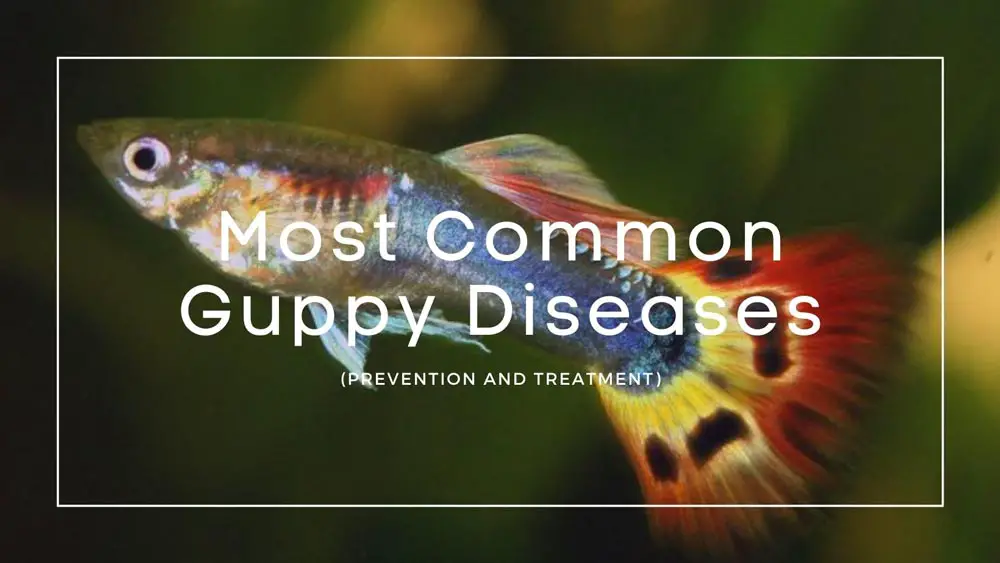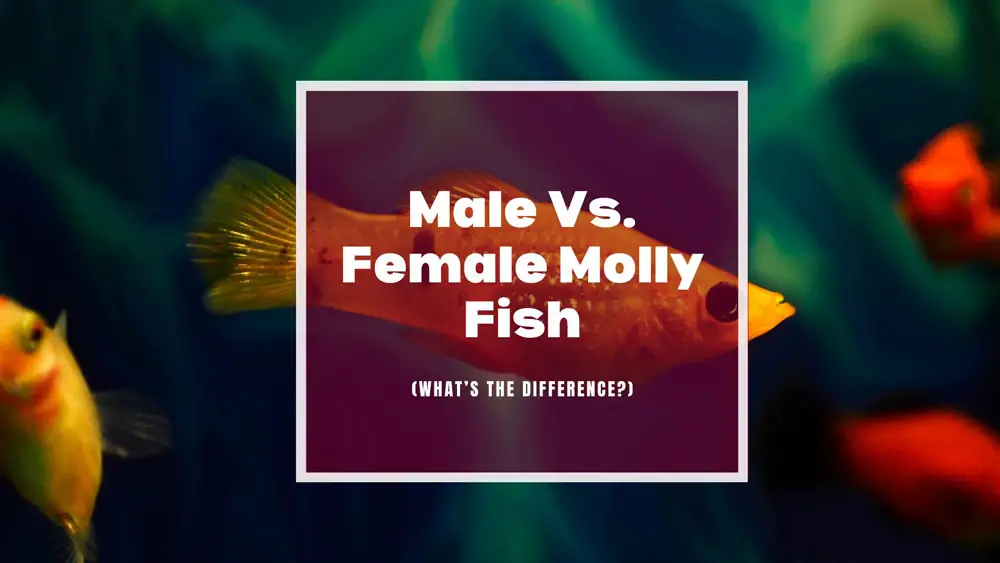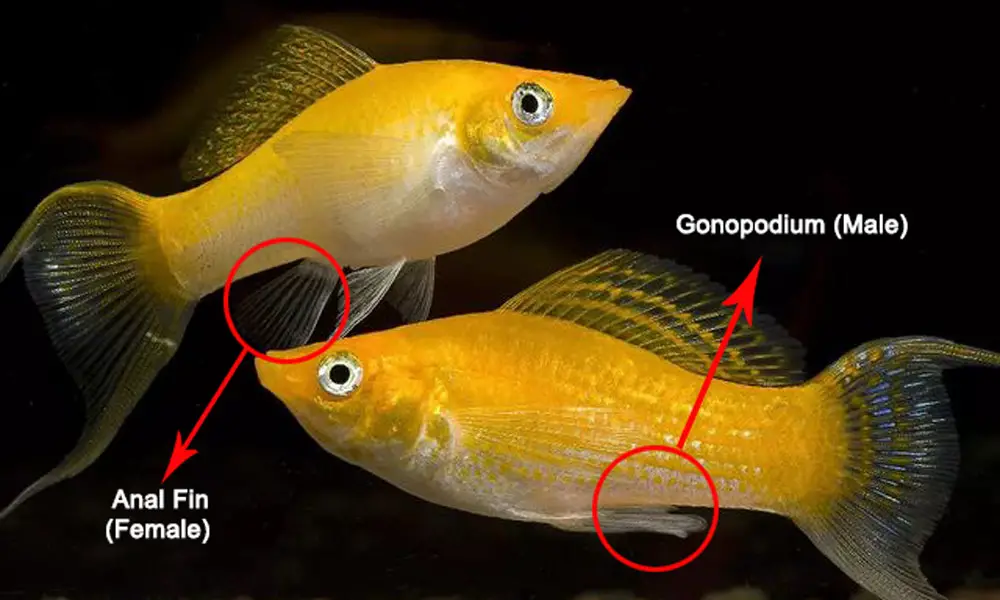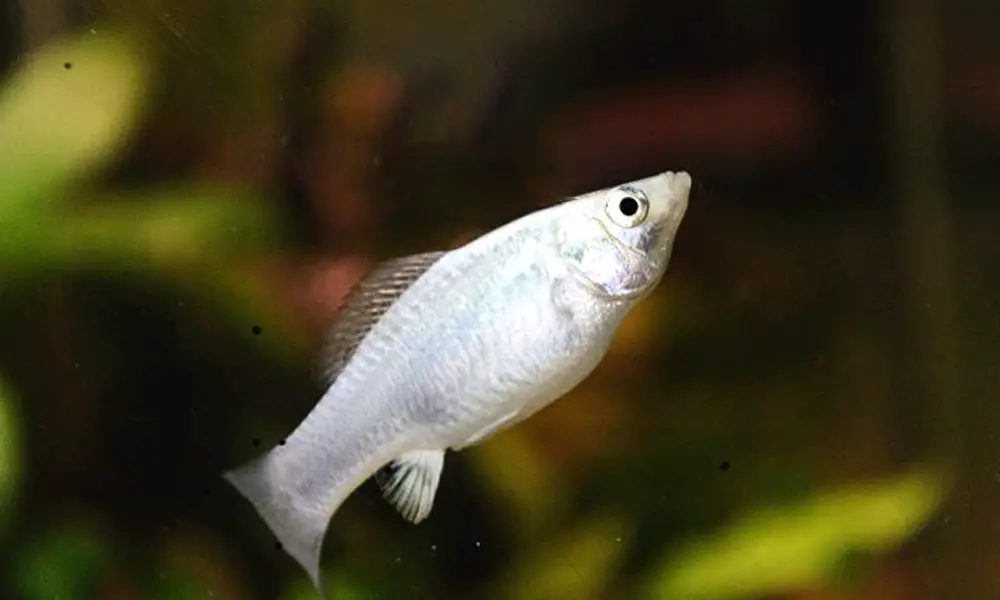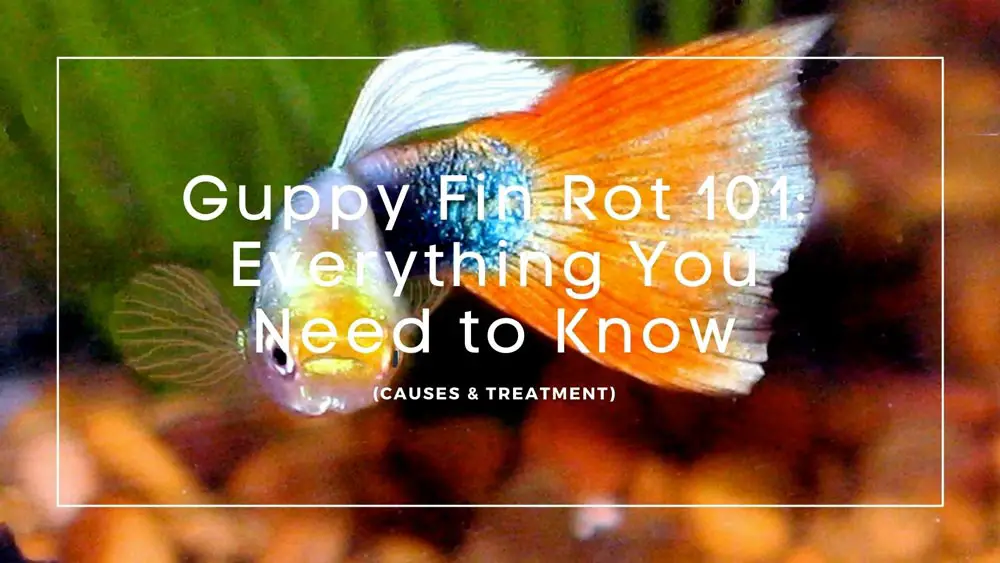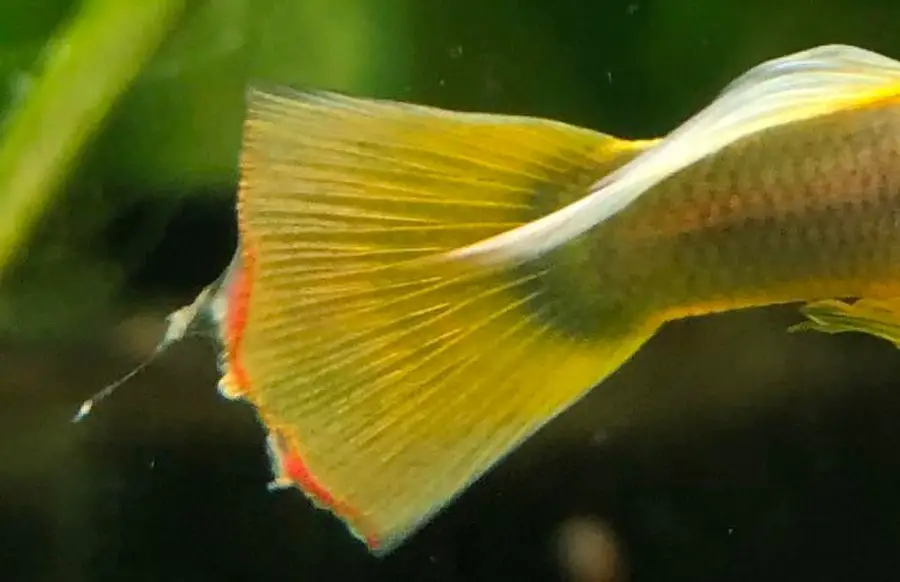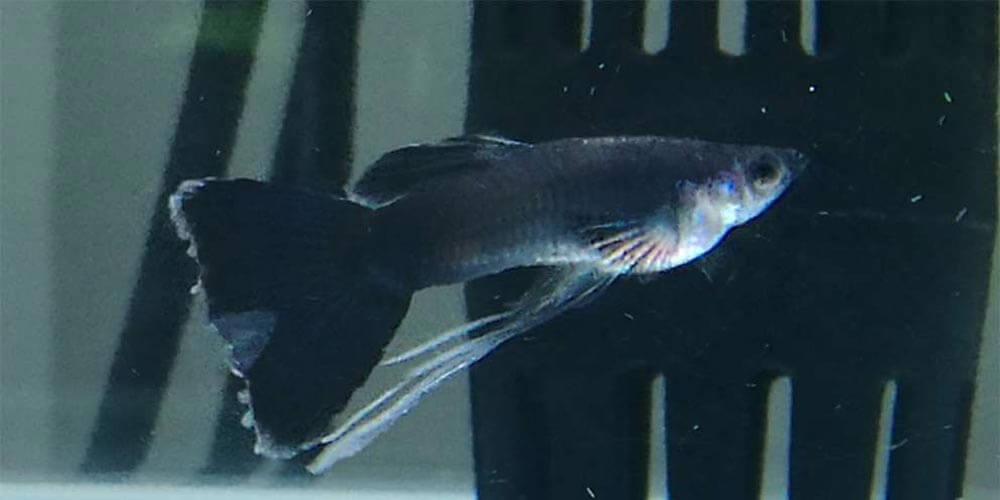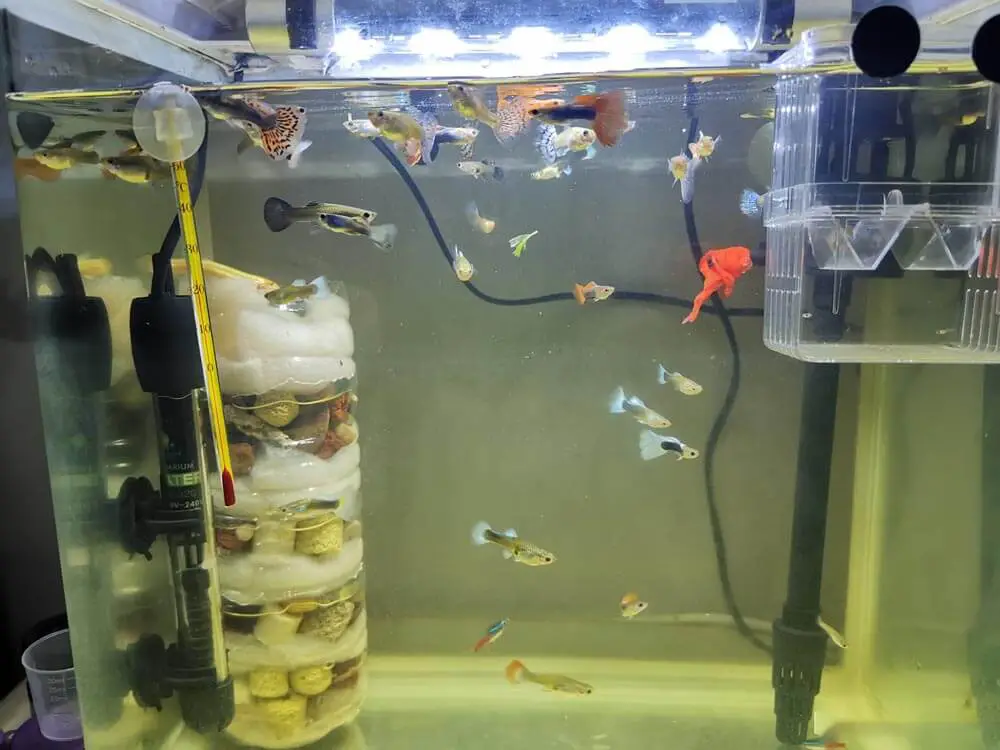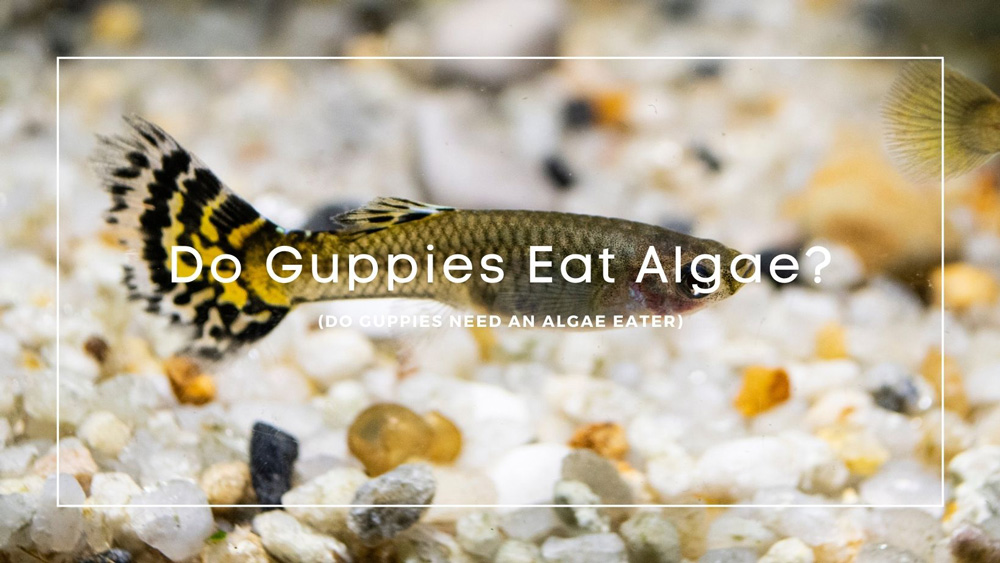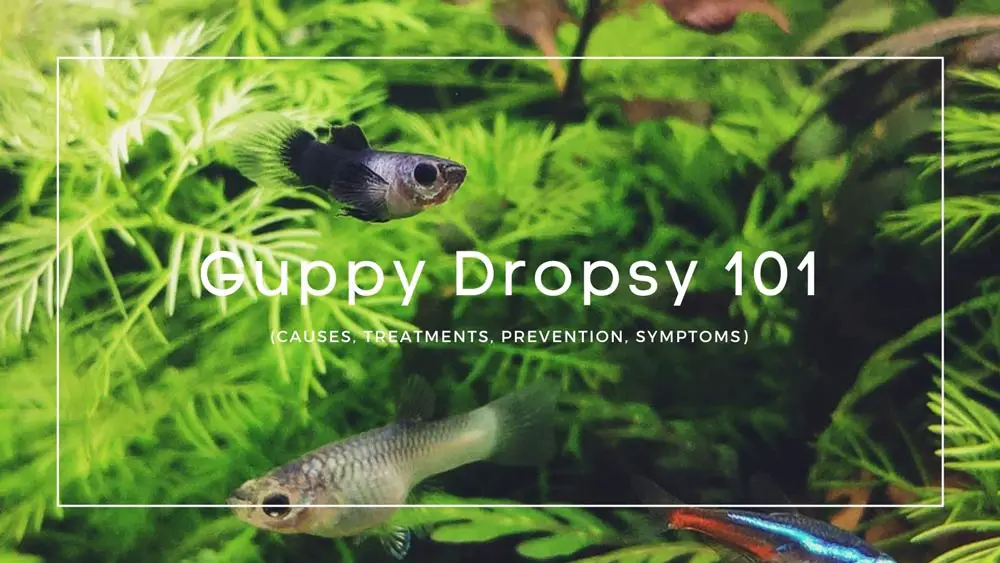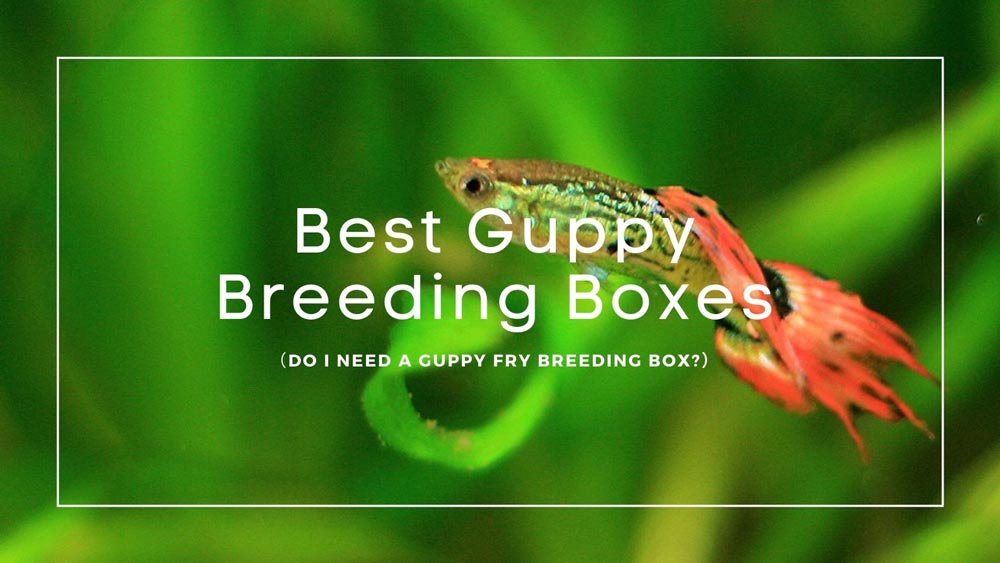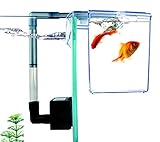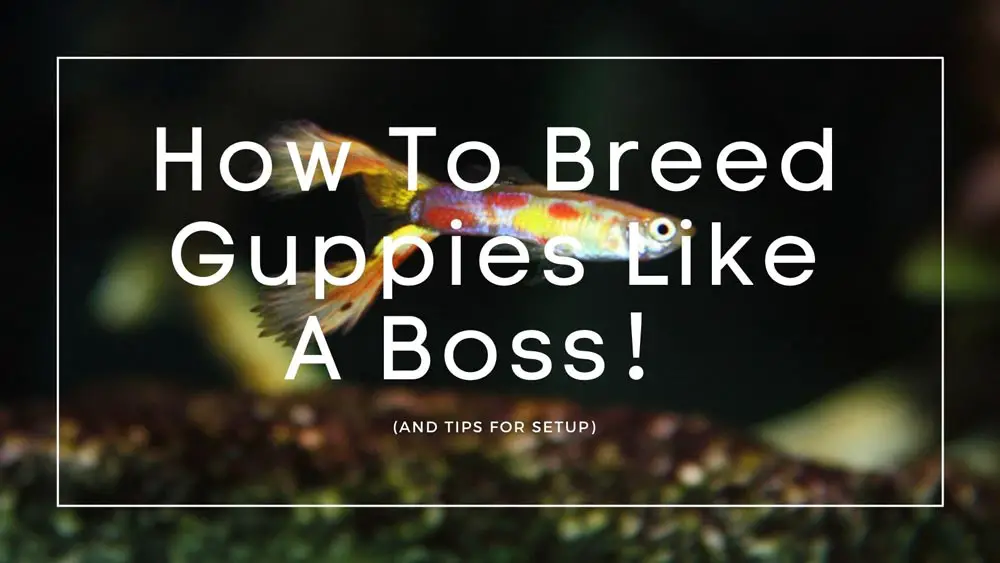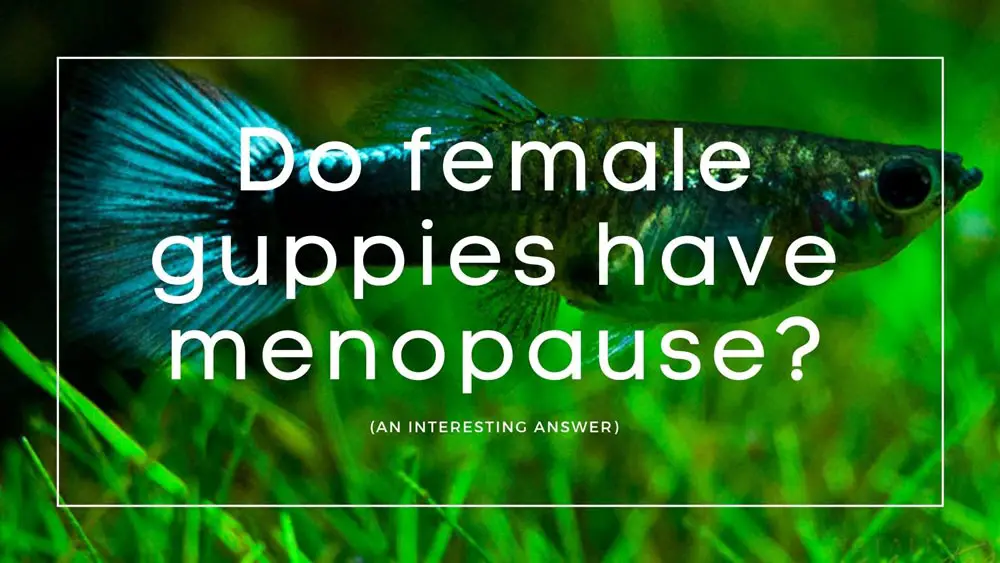Dealing with guppy diseases is never a fun activity for any fish owner. However, there are plenty of treatments for guppies, as well as some preventions that can help your guppies stay healthy and live active and productive lives.
The one rule of thumb that everyone will always tell you is that “It is much harder to prevent diseases in healthy ones than it is to cure a sick fish.”
If you are looking for common guppy diseases, causes, and treatments, you are in the right place.
Guppy Diseases Prevention
There are a lot of ways to prevent diseases in guppies. Most of these follow good common sense, but it helps to know what to do to keep your fish healthy [1].
You should always quarantine new fish before adding them to your community tank. This is to make sure that they don’t have any diseases that could potentially infect your other fish.
You should also keep your tank clean by doing regular water changes and vacuuming the gravel to remove any waste buildup. A dirty tank is a breeding ground for bacteria and parasites that can make your fish sick.
Also, inspect your tank on a daily basis to make sure that everything looks normal. This way you can catch any problems early on and treat them before they become serious.
All of these measures will help you keep your tank thriving and your fish as healthy as can be!

Reduce Stress
While most people probably think of “stress” as a human disease, it can actually have a great impact on guppies as well.
Stress weakens [2] all parts of a guppy’s health and can make it much more susceptible to the various diseases that you will see listed below.
One great way to lower stress in any guppy’s system is to provide them with plenty of places to hide and “explore.” You’ll want to include plenty of live plants in your aquarium along with other things like tree roots or leaves so that guppies have an environment that feels natural to them.
If you are keeping an aquarium that has more aggressive fish than guppies with them, it may be a problem for the group of guppies specifically.
You’ll also want to take all of the preventive tank measures listed above. A tank with fluctuating water temperatures is a big factor that can cause guppies to get sick, leading you down a much more difficult road when caring for your fish.
Dealing with guppy diseases is never a fun activity for any fish owner. However, there are plenty of treatments for guppies as well as some prevention measure that can help your fish stay healthy and live active and productive lives.
The one rule of thumb that everyone will always tell you is that “It is much harder to cure a sick fish than it is to prevent diseases in healthy ones”.
If you’re looking for common guppy diseases, causes, and treatment; you are in the right place.
Common Guppy Diseases, Symptoms & Treatment
Common guppy fish diseases and illnesses can be categorized as parasitic, bacterial, fungal, or viral. As you may know, parasites and bacteria are present in every aquarium but remain harmless unless the fish’s immune system is weakened. Fungus, on the other hand, typically comes from previous health conditions. Viral infections are less common than others.
Parasites
Most parasitic ailments result from bad water conditions, stress environment, or new fish that were not properly quarantined before being introduced to the main tank.
The most frustrating thing about parasites is that they are the most contagious and hard to kill.
There is a wide range of parasites that can affect guppies. The most common ones include the following:
Ich (White Spot)
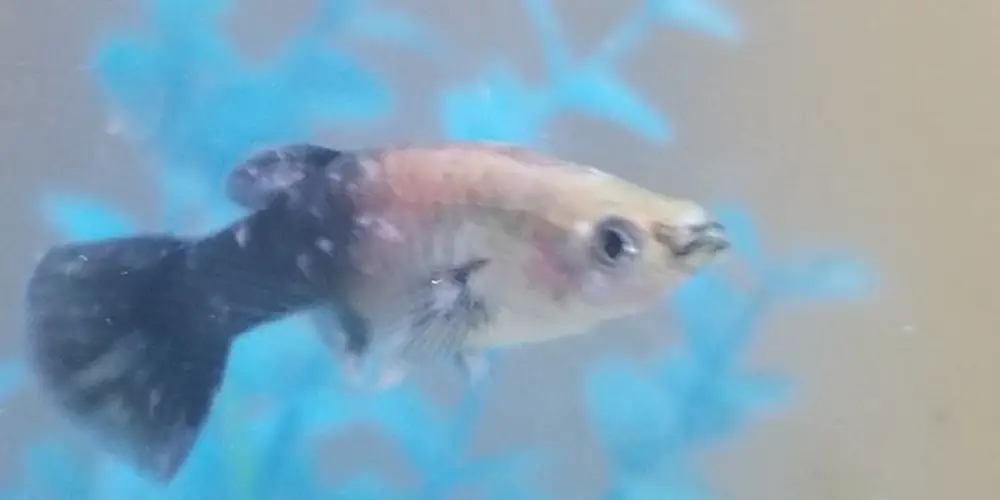
This is one of the classic diseases that almost everyone who raises fish is pretty well aware of.
Ich (pronounced ICK), or “white spot disease,” is caused by an obligate pathogen scientifically known as Ichthyophthirius multifiliis. Due to its complex life cycle [3], Ich is one of the most contagious fish diseases and can quickly spread through an entire aquarium population if left untreated.
So if you think one of your guppies might be infected, you must treat the entire tank, not just the individual fish.
Symptoms:
- Multiple white spots on your guppy fish’s body or fins
- Numerous guppies just died suddenly in one aquarium
- Guppies use objects in the aquarium to scratch against
- Flashing and scale loss
- Clamped fins
- Lethargic
Diagnosis of Ich can be tricky since many of these clinical signs can present with other non-serious issues, so you may want a veterinary examination from your local fish store or aquarium club before you treat.
Treatment:
- Start to up the water temperature gradually – your goal should be approximately 82° F (the high end of their comfort zone) for two weeks to speed up the life cycle of the Ich parasite.
- Use an aquarium-safe medication product following their guidelines for use.
- Perform 10-20% partial water changes daily.
- Continue treating for at least 10-14 days.
- Monitor the temperature and observe your fish closely. Discontinue treatment if your fish appear to be in distress
Author notes: Slowly increase the temperature by about 1 degree per day to prevent thermal shock, and make sure the new water you are adding is the same temperature as what you just removed.
Velvet (Rust or Gold Dust disease) in Guppies
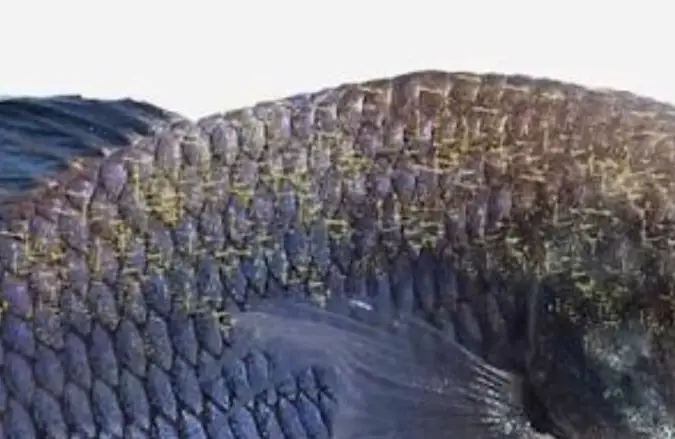
Velvet, also known as rust or gold dust disease, is caused by a dinoflagellate parasite called Piscinoodinium pillulare. A fatal parasitic infection can quickly kill your guppy fish if effective treatments are not used immediately and consistently.
Symptoms
- Your guppy fish has a fuzzy film on the skin (resembles gold or rust dust)
- You may see your guppies scratching
- Guppies may become lethargic
- Labored breathing and loss of weight
- Clamped fins
- Sudden death
Like Ich, velvet is pretty hard to identify. Other things can cause these remarkably similar clinical signs, which will require a microscope to correctly identify by your aquatic veterinarian.
Treatment
- Increase the water temperature by just a few degrees
- Turning off the lighting will also help (Piscinoodinium need light to photosynthesize [4])
- Performing a salt dip is the safest and most effective method of treatment.
- Copper sulfate can also be used, but this medication can change the alkalinity and pH. Moreover, it can kill invertebrates [5]. You need to follow the instructions carefully.
Anchor Worms (Lernaea spp.)

The anchor worms (Lernaea spp.) are not real worms but copepod parasites that appear as thread-like structures attached to the skin or fins of your fish, where they feed on the host’s tissue fluids and blood.
These parasites are most often found in pond fish like koi and goldfish but can also affect aquarium fish, including guppies.
Symptoms
- The visible protuberance of whitish-green threads on scales
- The affected fish may scratch against objects
- You may notice the inflammation and redness around the “worm”
Treatment
While this parasite is macroscopic, you should not try to manually remove the anchor worm from your guppies because this could damage their skin.
Instead, take your fish to the veterinarian for treatment or treatment with a salt bath for about 5 minutes daily until the parasite falls off.
Body and Gill flukes
Flukes in guppy fish are a group of microscopic, parasitic trematodes (or flatworms) that invade a fish’s gills or skin. The two types of flukes are the gill flukes (Dactylogyrus spp.) and the body flukes (Gyrodactylus spp.)
They are characteristic monogenean parasites, which means they have the haptor or holdfast used to attach them to the fish’s skin cells and mucus, weakening the fish and allowing other parasites or bacteria to invade.
Symptoms
Flukes produce similar symptoms to ich. Unlike the visible ich spots on the fish, flukes are not always visible and can be difficult to see with the naked eye, except if you have a black fish, or they can be observed during a movement with a magnifying glass.
Other symptoms of flukes in guppy fish include:
- Loss of color
- Gasping at the water’s surface
- Excess mucus production covering gills or body
- Clamped fins
- Reddened skin & flared gills
- Small blood dots on the skin and fins
- Lethargic
Treatment
First, you need to determine the genus of fluke to know what medication will be effective. The most common treatment for flukes is using a gamut of chemicals —salt, formalin, and Praziquante.
Check out Diana’s treatments and disease management strategies for skin flukes (Gyrodactylus species) on guppies here: Dianawalstad.com
Freshwater Fish Lice (Argulus spp.)
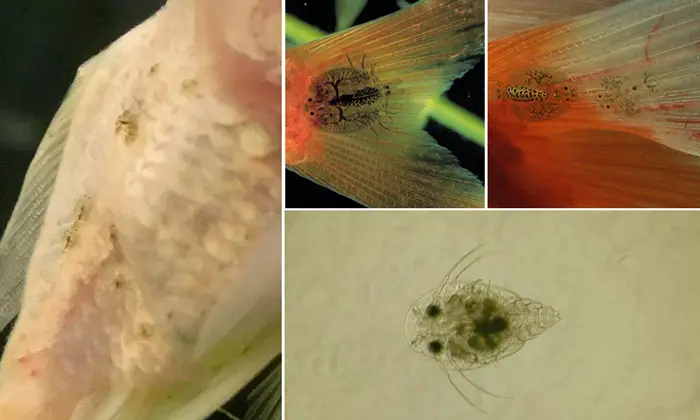
Freshwater fish lice (Argulus spp) are parasitic crustaceans. Like anchor worms (Lernaea spp), Argulus spp can be found in ponds, aquariums, and the wild but most often in freshwater.
Older stages of Argulus species are macroscopic parasites with large, flattened shells adapted for rapid movement over the skin’s surface. With their hooks and needle-like mouthparts, they periodically attach themselves to the skin of their hosts, where they feed on body tissue.
Symptoms
The most obvious symptom is the presence of small (3–7 mm long x 2–4 mm wide [6]), dark oval, lice-like parasites attached to the skin, gill chamber, and mouth of your fish.
Beyond that, Lice symptoms can present in a variety of ways.
- Infected guppies may rub themselves against objects in the tank in an effort to remove lice
- Guppies are aggravated and restless
Treatment
Common treatments include:
- Physically removing the lice with a hemostat or forceps.
- Treating with chemicals like iodine.
- Using a salt bath (35ppt) for about 5 minutes daily until the parasites fall off.
Since adult female Argulus will lay eggs onto hard surfaces and live plants in aquariums, it’s important to kill any eggs with Diflubenzuron (Dimilin) [7].
Chilodonella (Chilodonella spp.)
Chilodonella species in fish are ciliate parasites that can move over the surface of the skin and gills of guppies. They are between 0.5–0.7 mm in size, heart-shaped, and have bands of cilia on their ventral sides.
Chilodonella can be hard to diagnose but are easy to treat if caught early, especially for young fish.
Symptoms
- Labored breathing
- Clamped fins
- loss of appetite
- Layer of mucus secretion covering objects in the aquarium.
Treatment
Chilodonella can survive in a wider range of different water temperatures than other parasites. Therefore, raising the water temperature does not work.
The most common treatments are chemicals like formaldehyde, acriflavine, and methylene blue. If you choose to treat with chemicals, be sure to remove carbon from your filter because it will absorb the treatment.
Hexamita
Hexamita is often referred to as the main pathogen that causes “hole-in-the-head” (HITH) and head and lateral line erosion (HLLE) disease in fish. This is NOT true. Many factors contribute to HITH or HLLE syndrome [8], and Hexamita is only one of them.
Hexamita is a pyriform-shaped, flagellated protozoan. They are common in the intestine of cichlids such as severums, angelfish, discus, Oscars, and African cichlids but can cause fatal tissue and lead to severe systemic visceral disease in any freshwater fish.
Symptoms
- White poop
- Decreased appetite (Spitting food back out)
- Bloated belly
- White, stringy feces
Treatment
Hexamita is usually treated with metronidazole in medicated fish food. The most common medications are Hikari Metro+™, SeaChem Laboratories MetroPlex, or API General Cure. If your guppy fish has stopped eating, you can try to add metronidazole directly to the water.
Tetrahymena spp (Guppy Disease)
Tetrahymena species are actively motile ciliated protozoa, primarily inhabiting the surfaces of fish and seeking to consume any organic matter they find. However, they have pear-shaped bodies with longitudinal rows of cilia that allow them to invade their host’s muscles, coelom, and ocular fluids, causing disease.
Although it can affect other types of fish, it most often causes the death of large numbers of guppies (Poecilia reticulata).
Symptoms
The most common symptoms of Tetrahymena resemble ich (Ichthyophthirius multifiliis). But ich tends to cover the entire body of the guppy fish, while tetrahymena only affects a small section at a time. The difference can’t be confirmed without microscopic analysis.
Here are some other symptoms to look for:
- White spots on their flanks and fins
- Clamped fins
- Loss of appetite
- Labored breathing
- Lethargy
Treatment
Unfortunately, there is no reliable treatment for Tetrahymena infections in guppies. Scientists found a potential treatment [9] under laboratory conditions in 2010, but it has not been turned into a commercial product or available to aquarists.
Tetrahymena species are more resistant to salinity than ich (Ichthyophthirius multifiliis), so the salt bath treatment is not effective.
You can try using formalin or medications containing malachite green and copper’s active ingredient.
The common malachite green medications on the market include:
And the common copper-based medications include:
Bacteria
Bacteria is the second most common cause of diseases in guppies after parasites. Most bacterial infections are secondary to parasite infestations, physical injury, or long-term stress, including poor water quality, overcrowding, inappropriate tank mates, or cheap, inadequate food.
Many different types of bacteria can infect guppy fish and produce a similar syndrome. The most common ones are Aeromonas, Edwardsiella, Epitheliocystis, Flavobacterium, Pseudomonas, Mycobacterium, Streptococcus, and Vibrio.
Diagnosing the exact type of bacteria is nearly impossible unless you can access an incubator, making the treatment very tricky and often ineffective. Therefore, the most common treatments for bacterial infections in guppies are broad-spectrum antibiotics.
Guppy Dropsy
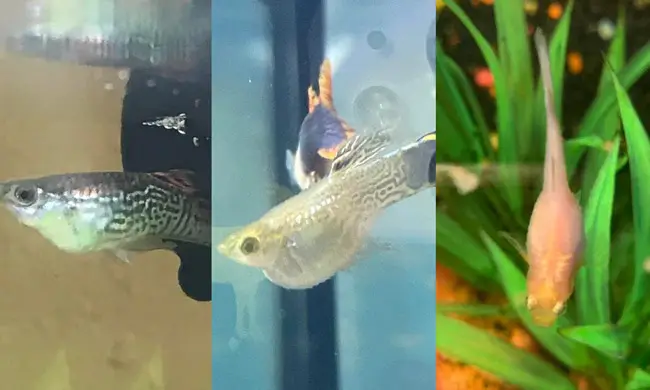
Dropsy is a fatal ailment that affects the kidneys of guppy fish, and there is no known cure. Since it’s more of a symptom than an actual disease, it could be caused by hundreds of factors.
Symptoms
In advanced stages, the fish’s scales will start to stick out from its body in a “pine cone” effect, hence the name “pinecone disease.”.
Other symptoms include:
- Swollen belly and anus
- Bulging eyes
- High respiratory rate
- Redness of the skin or fins
- Reddish tints on skin and fins
- Abnormal swimming behavior
Treatment
Dropsy is not always treatable; it depends on the underlying cause. You can try treating it with an Epsom Salt bath in a quarantine aquarium or making medicated food with a broad-spectrum antibiotic when the guppy fish appears to have pinecone-like scales.
In most cases, the fish will not recover, and it’s kinder to euthanize them.
Popeye In Guppy Fish
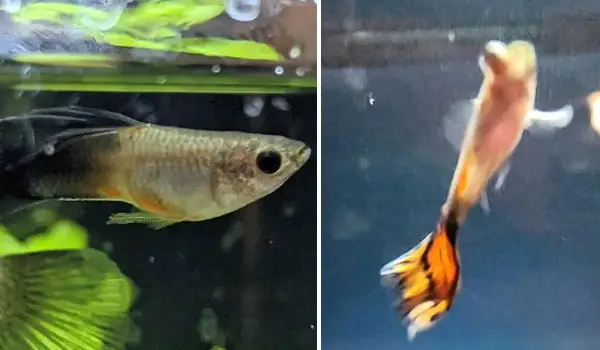
Like most bacterial infections, pop eyes (or bulging eyes) in guppy fish for so many different reasons that it can become a losing battle to try fighting for a fish with this symptom.
Typical causes of popeye include injuries to the eye, mycobacteria in the water, and viruses. In addition, a group of aerobic, gram-positive bacteria called Corynebacterium is the most common cause of bulging eyes in guppies.
Author notes: Most aquarium bacteria that infect fish are gram-negative.
Treatment
The gram-positive Corynebacterium species should be treated with proper antibiotics. Some antibiotics are designed to treat gram-negative bacteria, while others work better against gram-positive bacteria.
A good antibiotic to start with is erythromycin – the main ingredient of Mardel Maracyn and Thomas Labs Fish Mycin. Make sure it’s Mardel Maracyn, not Maracyn 2, as the latter contains a different active ingredient Minocycline (works better against gram-negative bacteria.)
Fin & Rail Rot in Guppies
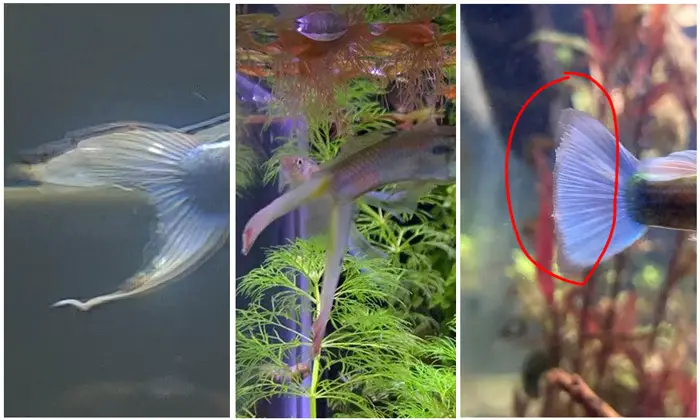
If you see a guppy that has rotting fins with white edges, it is due to a gram-negative bacterial infection, which causes the fins and tail to rot away as the fish’s immune system tries to fight the infection.
Sometimes, ragged fins could be caused by aggression from tank mates and fin nippers, especially when the white edges are absent.
Treatment
Using the medicated feed with broad-spectrum antibiotics is an effective way of treating most gram-negative bacterial infections.
The common antibiotics on the market include:
- API Fin And Body Cure
- Seachem KanaPlex
- Mardel Maracyn 2
- Midland Vet Services Aqua-Mox Forte Amoxicillin
- Fishbiotic Ampicillin
- Thomas Labs Fish Mox (or Doxy)
Beware these antibiotics DON’T work when added directly to water; they only work when the fish ingests them.
Columnaris in Guppy Fish

Probably most fish keepers have heard of Columnaris or cottonmouth infection. It’s one of the most common guppy fish infections that pose a serious threat to your aquariums.
Columnaris is caused by Flavobacterium columnare, an aerobic, rod-shaped, gram-negative bacterium. It is often mistaken for a fungal infection because of its furry white growth on the fish’s skin.
This disease is very contagious and can quickly spread throughout your aquarium, leading to mass fish die-offs. Columnaris often occur in new tanks or when there’s a sudden temperature or water quality change.
Symptoms
- Gray or whitish growth on the head, fins, or gills
- Progressive deterioration of the back
- Cotton-wool lesions on the mouth
- Rotting fins
Treatment
Terramycin is the most commonly used antibiotic to treat Columnaris. You can dose Terramycin either in fish food or as a bath. In addition, you should add salt to the water to reduce osmotic shock from the infection.
Swim bladder in Guppy Fish
As you may know, the swim bladder is an internal organ that helps the fish to maintain its buoyancy. The swim bladder is a common syndrome in fancy goldfish and bettas. It’s less common in guppies.
The causes of swim bladder syndrome are usually multifactorial, meaning that several underlying causes often contribute to the disease’s development, making the treatment quite difficult.
Another factor that can lead to swim bladder problems is genetics. Well, there’s a certain amount of luck involved. That’s why you should always choose healthy-looking guppies from a reputable dealer.
Symptoms
If the swim bladder doesn’t work properly, you will see your fish:
- Sink to the bottom or float to the top of the aquarium
- Hang at an angle in the water
- Swim erratically or upside down
- Swollen belly and Curved back
- Loss of appetite
Treatment
- Quarantine your guppy fish in a hospital aquarium
- Treat with a mix of Seachem MetroPlex and Maracyn 2 in the food.
Clamped Fins in Guppy Fish
Like popeye or swim bladder, the clamped fin is not a specific disease. It refers to a condition where the fish’s fins are held tightly against the body due to multiple problems, including stress, poor water quality, or parasitic infection.
Symptoms
- Their fins look like someone has ironed them down,
- The fish is listless
- Labored breathing
- Lethargic
Treatment
If you have the right water parameters, parasites like velvet, ich, and tetrahymena can also cause this problem. See supportive treatment above.
Fungi
Virtually fungal infections originate from previous health conditions. True fungal diseases are seldom in live fish. Besides the causes of poor water quality and the buildup of decomposing material, bacterial infections and physical injuries to the skin can expose the fish to secondary fungal infection.
Symptoms
- Initially, you’ll see small white or grey growth on the fish skin, mouth, or fins
- Untreated fungus usually has cotton-like growths
- Excess mucus production
- Eventually, the fungus will kill the fish
Treatment
Catching fungal infection early is crucial. If your fish is still alive and showing early signs of a fungal infection, you can treat the fish with a topical anti-fungal medication in a quarantine aquarium, such as API fungus cure and Mardel Maracyn.
Removing filter carbon and turning off your UV sterilization while treating the fish.
Viruses
The last group of guppy diseases I want to touch on is viruses. They are tiny organisms that can only replicate inside the cells of all aquarium fish.
Also, viral infections can be difficult to diagnose, and there is no effective treatment. So, the best way to protect your fish is to prevent them from getting infected in the first place.
Red Spots or Blotches on Guppies
More pics
Like goldfish, red spots or blotches on the fins or skin of guppies can happen when the fish are infected with a deadly virus called Viral hemorrhagic septicemia. Ammonia poisoning also can evoke skin damage, but it’s not often seen in a well-maintained aquarium.
VHSV or VHSv (short for Viral hemorrhagic septicemia virus) is an acute, contagious [10], and often fatal virus that creates red, bloody spots or blotches on a fish’s skin, gills, eyes, and body.
Symptoms
- Red blotches or sports on skin, gills, eyes, and bodies
- Popeye
- Swollen (fluid-filled) abdomens
- Their color may fade
- Abnormal swimming behavior
Treatment
VHSV should be attempted to treat with broad-spectrum antibiotics in their food. Same as other gram-negative bacterial infections.
- API Fin And Body Cure
- Seachem KanaPlex
- Mardel Maracyn 2
- Midland Vet Services Aqua-Mox Forte Amoxicillin
- Fishbiotic Ampicillin
- Thomas Labs Fish Mox (or Doxy)
Don’t Freak Out!
Now you have it. These are the most common guppy fish diseases and how to treat them.
As with any freshwater fish, early detection and treatment are key to a successful outcome. So, keep a close eye on your guppies, and don’t hesitate to seek professional help if you can’t identify the problem or treat it effectively.
Being a responsible fishkeeper also means taking proactive steps to prevent disease outbreaks. So, ensure you follow the basic rules of aquarium husbandry, such as regular water changes, a quality filter, and quarantining new fish or decorations before adding them to your tank.
I hope you found this article helpful. If you have any questions or comments, please feel free to leave them below. Thanks for reading!
Article Sources:
- Prevention and Therapy of Fish Diseases [FAO]
- The Concept of Stress in Fish [ScienceDirect]
- ICHTHYOPHTHIRIUS MULTIFILIIS (WHITE SPOT) INFECTIONS IN FISH [University of Florida]
- Sustainable aquaculture requires environmental-friendly treatment strategies for fish diseases [Wiley Online Library]
- Therapeutic Considerations in Aquaculture [MerckVetmanual]
- ARGULUS (FISH LOUSE) INFECTIONS IN FISH [University of Florida]
- Parasitic Diseases of Fish [MerckVetmanual]
- Hole in the Head [AquariumScience]
- Treatment development for systemic Tetrahymena sp. infection in guppies, Poecilia reticulata Peters [ResearchGate]
- Viral Hemorrhagic Septicemia [Lowa State University]
